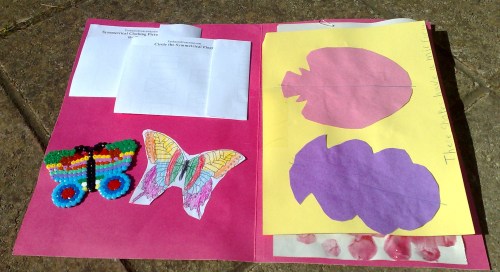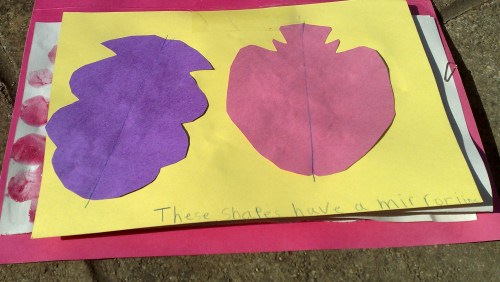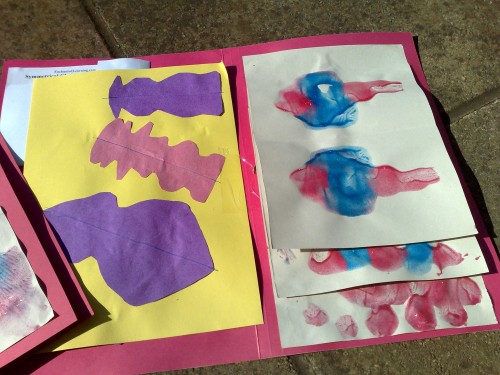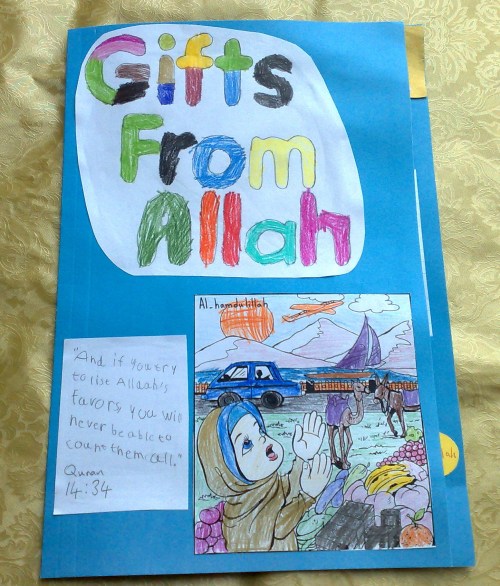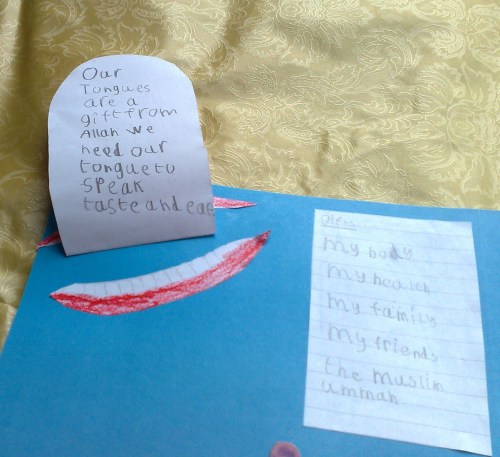My friend, Umm K, has made this beautiful Ramadan lapbook. All handmade, lots of detail and no printouts!
At the top of the picture there is a mini book of facts relating to Ramadan. The booklet opens out as plain papers with information written inside, see below. The page photographed contains verses from Surah Alaq. The following verse is also included:
“Oh you who believe! Fasting is prescribed for you asit was prescribed for those before you, that you may become Al- Muttaqoon (the pious)” 2:183
Lots of different information on Ramadan could be included in here.
Below the facts mini book Umm K has sewn a felt pocket, inside which there are two minibooks of dos and don’ts. Actions to be encouraged in Ramadan, such as reciting more Quran and giving saqaqah, are inside the circular minibook marked with a tick (or check), and actions to be avoided, such as lying, backbiting are inside the book with the cross.
On the other side from the covers are the mini books of a few stapled pages.
The last mini book on this side of the lapbook is a three page layer book on information relating to Taraweeh, Laylatul Qadr and duas. I really like all the decorative touches, maashAllah.
On the left half of the lapbook there is an extension page. When folded in the extension page has a checklist for daily ibaadah, including completing of all prayers, Quran memorisation, recitation and study of tafsir, and a selection of good deeds; smile at a Muslim, give a present or food, gain knowledge of Islam, go to meet another Muslim, visit an ill person.
These are suggestions, the checklist can be tailored to suit the individual using it.
The checklist is on a piece of A4, folded in thirds, business letter style. Inside is space for making notes on achievements and goals for Ramadan, maybe prayer times, notes on dhikr, whatever you choose. The checklist is supposed to be used as a tool for a Ramadan active with ibaadah, inshAllah.
When the extension page is folded out, on the other side of the checklist is a calendar for the month, to be used along with the checklist, inshAllah.
The other two mini books in this section are the “Rules for Fasting ” mini book and “Targets in Ramadan” secret book.
The photo above shows the minibook and the decorative pocket which it slots into. The booklet is simply papers folded and stapled together, with the verse from Surah Al-Asr and decoration on the front.( Click on the photo to enlarge it.). Inside the pages are left blank, to be filled in with personal targets for Ramadanand other journaling.
The booklet fits into the decorated pocket for storage. The simple decorative touches with the coloured markers make it look special, maashAllah.
The last mini book is the one on rules for fasting.
The cover is made from card.
Inside, the booklet is divided into sections, with little tabs made by sticking pieces of coloured paper onto the pages, marking the sections.
After the verse on the opening page:
“Ramadan is the month in which the Quran was sent down as a guide to humanity also clear signs for guidance and judgement between right and wrong.” 2:185
There are sections on what is permitted while fasting (using miswak, swallowing own saliva etc), what invalidates the fast (deliberate eating or drinking etc) and lastly, a list of those exempted from fasting, (the sick, the traveller etc.) The level of detail in this section can be expanded the older the learner is.
I really like the way Umm K turned this lapbook into a really personal and active learning tool, with the inclusion of the checklist and journal. It is good for young learners trying out fasting, and also great for young people experiencing their first compulsory Ramadan.
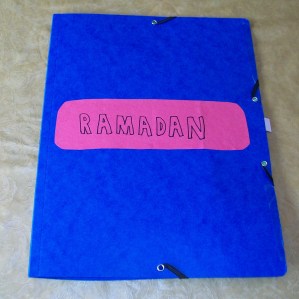
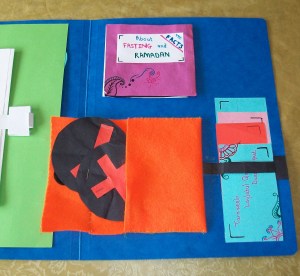



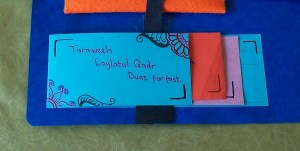



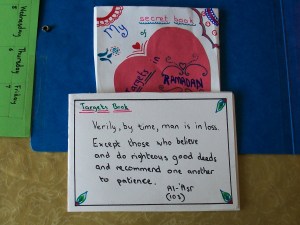
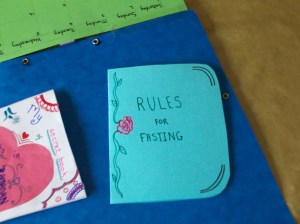





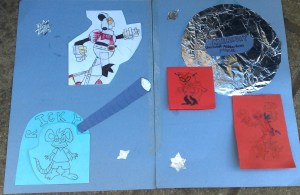

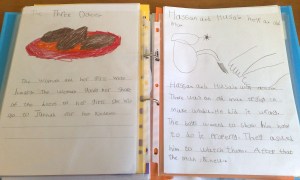

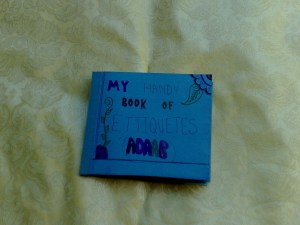
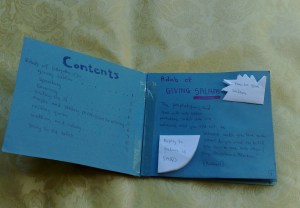
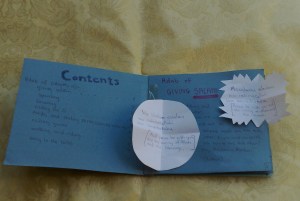

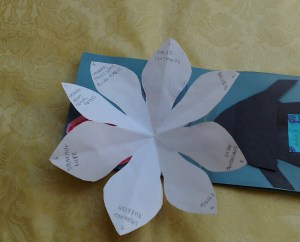


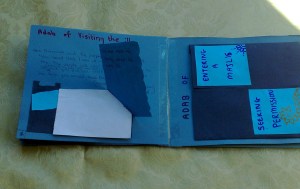
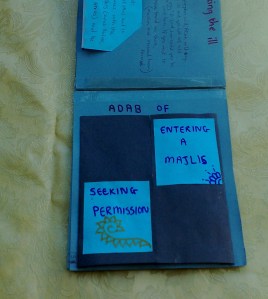
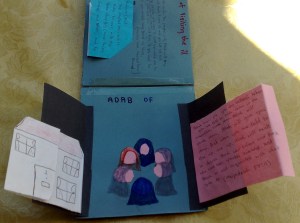


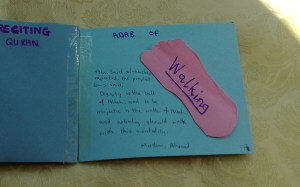



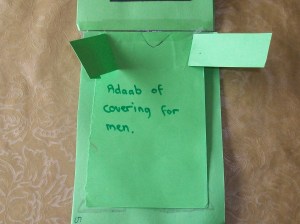
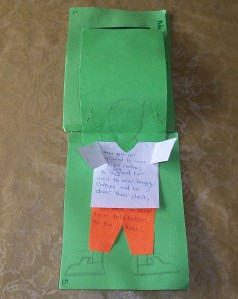



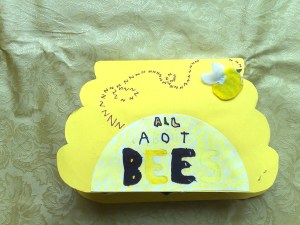





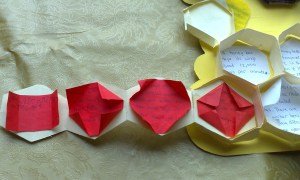




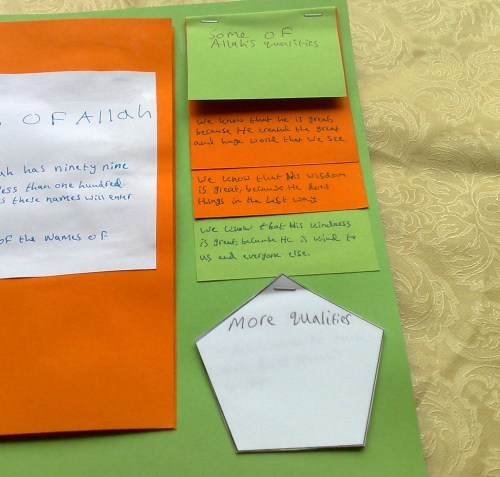

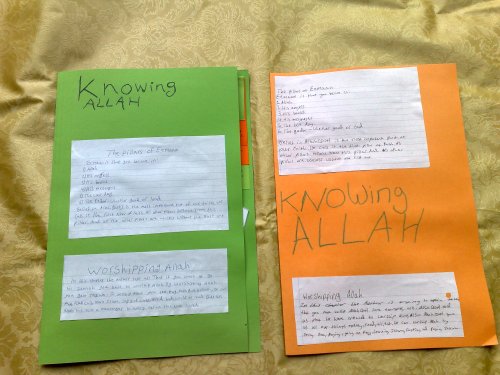
 I did a practical project on reflection with my daughters, and gathered together whatever could be done on paper into a lapbook. The following pictures are from my 6 year old’s lapbook.
I did a practical project on reflection with my daughters, and gathered together whatever could be done on paper into a lapbook. The following pictures are from my 6 year old’s lapbook.